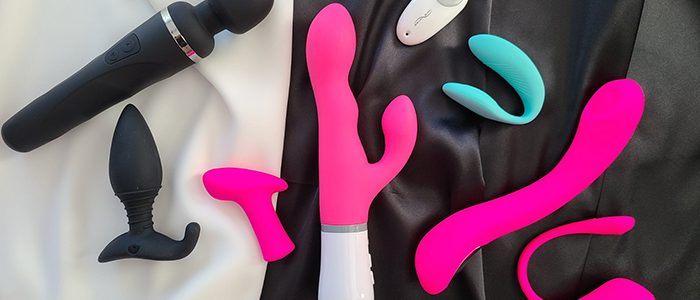Vibrators are becoming more prominent in mainstream media and in retail stores that do not specialize in sex toys. So, more and more people have asked the question, “How many people really use vibrators?”
Until recently, there have not been many trustworthy studies on vibrator use. Not surprisingly, the people who gather the most information about vibrator use are also the companies trying to sell us more vibrators, which is not surprising. These surveys are almost always related to some kind of marketing, and the methods used are rarely discussed in depth in the reports.
Michael Reece and Debra Herbenick, along with colleagues at Indiana University, published several surveys on vibrator use in 2009 that provide a far more trustworthy and comprehensive look at the how and why of vibrator use.
The results of their research are below.
Statistics from different studies:
Masturbation Statistics:
- 66% of men and 47% of women in the US reported masturbating in the past 90 days (Herbenick et al., 2010; Reece et al., 2010)
- 66% of men and 33% of women aged 16-74 in the UK reported masturbating in the last 4 weeks (Mercer et al., 2013)
- 72% of men and 42% of women aged 16-69 in Australia reported masturbating in the last year (Richters et al., 2014)
Vibrator Usage Statistics:
- 52.5% of women have used a vibrator at some point (Herbenick et al., 2009)
- 46.3% of women report using a vibrator during solo masturbation (Herbenick et al., 2009)
- 37.3% report using a vibrator during foreplay with a partner (Herbenick et al., 2009)
- 40.9% have used a vibrator as part of partnered sex (Herbenick et al., 2009)
- 32.9% of men have used a vibrator/dildo in their lifetime (Herbenick et al., 2017)
- 20% of women reported using a vibrator in the past month, compared to 5.5% of men (Herbenick et al., 2017)
Orgasmic Response with Vibrators:
- 76.14% said vibrators profoundly changed their capacity for orgasm (Waskul & Anklan, 2020)
- 23.86% reported no noticeable difference in orgasmic capacity from vibrator use (Waskul & Anklan, 2020)
- 34.43% cited the ability to achieve quicker/easier orgasms with a vibrator (Waskul & Anklan, 2020)
- 32.84% said vibrators allow them a more powerful orgasmic experience (Waskul & Anklan, 2020)
Barriers to Using Vibrators:
- 73.9% of non-users are interested in trying a vibrator (Waskul & Anklan, 2020)
- 44% of interested non-users cited lacking sufficient funds to purchase one (Waskul & Anklan, 2020)
- 35.3% said embarrassment or fear of judgment prevents usage (Waskul & Anklan, 2020)
When should you use a vibrator?
- Women reported using vibrators most often during masturbation (46 percent) and least often during sexual encounters (37 percent ).
- During “sex play or foreplay,” men were more likely than women to use vibrators with a partner (40 percent ).
- Only 17 percent of men admitted to using a vibrator for masturbation in a survey.
- The article on men asked about their motivations for first using a vibrator. The most common answer was “for fun,” which accounted for 67 percent of all responses.
- 40 percent of men said they used a vibrator to help a partner experience an orgasm, and 7 percent said they used a vibrator to help themselves experience an orgasm, according to the survey.
- The most commonly used vibrators are the most powerful wand massagers. Next comes the remote-controlled sex toys, followed by wearable panty vibes. Anal plug vibrators take the next place in terms of popularity, followed by bullet vibrators.
The relationship between the use of vibrators and sexual function
Researchers conducted a study comparing vibrator users and non-vibrator users on a number of criteria for sexual function (they asked questions on topics such as erectile function, intercourse satisfaction, pain, orgasm, lubrication, and sexual desire).
In general, men and women who used vibrators reported fewer problems with sexual function than those who did not use vibrators. Individuals who had used vibrators in the recent past (within the last month) responded to the surveys in a way that showed they had fewer problems with sexual function.
The use of vibrators and other healthy habits
The study shows that men and women who use vibrators are more likely to engage in activities that show they are comfortable with their bodies and their sexuality.
It found that women who had ever used a vibrator were significantly more likely than women who had never used a vibrator to have had a gynecological exam within the past year and a genital self-exam within the past month.
Men who reported having performed a testicular self-examination in the past month were more likely to have done so using a vibrating device.
In addition to their findings, I have included numbers from previous research, some of which are little more than marketing material, while others are a true examination of vibrator use.
Overall, Reece and Herbenick found that slightly less than half of respondents had ever used a vibrator, with slightly more women (52 percent) than men (45 percent) reporting using one.
Cleaning sex toys
The good news is that the vast majority of men and women clean their vibrators regularly.
The bad news is that some people do not think this routine is really necessary.
- 20 percent of men and 14 percent of women say they never clean their toys). Even among those who tend to clean their sex toys, there’s still room for improvement.
- 60 percent of women and 53 percent of men say they clean their toys before and after use, while the rest say they clean them either before or after playing.
The fact that they cleaned the toy before using it for the first time is something that I think many people overlook but is extremely important given the severe lack of hygiene in most sex toy factories. It’s not clear if they inquired about it or not, but it’s something I would love to know.
The use of vibrators can have negative effects
The women’s responses to questions about the negative side effects of vibrator use were the only ones reported by the researchers. They asked, among other things, whether the women experienced numbness, pain, irritation, swelling (the uncomfortable kind), or tears or cuts in the vagina.
The results are as follows:
- The majority of women (71.5 percent) reported no adverse reactions.
- Numbness occurred in 16 percent of respondents.
- A painful sensation was reported by 3 percent of respondents.
- Ten percent of the respondents felt irritated.
- Swelling was noted by 8% of the population.
- 1 percent of the participants reported cracks or sores.
Those who reported unfavorable side effects all felt that they were short-lived, low-intensity, and not widespread.
Resources:
- Herbenick D, Reece M, Sanders S, Dodge B, Ghassemi A, Fortenberry JD. Prevalence and characteristics of vibrator use by women in the United States: results from a nationally representative study. J Sex Med. 2009 Jul;6(7):1857-66. doi: 10.1111/j.1743-6109.2009.01318.x. Epub 2009 May 7. PMID: 19453881.
- Herbenick D, Bowling J, Fu TJ, Dodge B, Guerra-Reyes L, Sanders S. Sexual diversity in the United States: Results from a nationally representative probability sample of adult women and men. PLoS One. 2017 Jul 20;12(7):e0181198. doi: 10.1371/journal.pone.0181198. PMID: 28727762; PMCID: PMC5519052.
- Waskul, D., & Anklan, M. (2020). “Best invention, second to the dishwasher”: Vibrators and sexual pleasure. Sexualities, 23(5-6), 849-875. https://doi.org/10.1177/1363460719861836
- Herbenick D, Reece M, Schick V, Sanders SA, Dodge B, Fortenberry JD. Sexual behavior in the United States: results from a national probability sample of men and women ages 14-94. J Sex Med. 2010 Oct;7 Suppl 5:255-65. doi: 10.1111/j.1743-6109.2010.02012.x. PMID: 21029383.
- Mercer CH, Tanton C, Prah P, Erens B, Sonnenberg P, Clifton S, Macdowall W, Lewis R, Field N, Datta J, Copas AJ, Phelps A, Wellings K, Johnson AM. Changes in sexual attitudes and lifestyles in Britain through the life course and over time: findings from the National Surveys of Sexual Attitudes and Lifestyles (Natsal). Lancet. 2013 Nov 30;382(9907):1781-94. doi: 10.1016/S0140-6736(13)62035-8. Epub 2013 Nov 26. PMID: 24286784; PMCID: PMC3899021.
- Richters J, Altman D, Badcock PB, Smith AM, de Visser RO, Grulich AE, Rissel C, Simpson JM. Sexual identity, sexual attraction and sexual experience: the Second Australian Study of Health and Relationships. Sex Health. 2014 Nov;11(5):451-60. doi: 10.1071/SH14117. PMID: 25376998.


Add comment